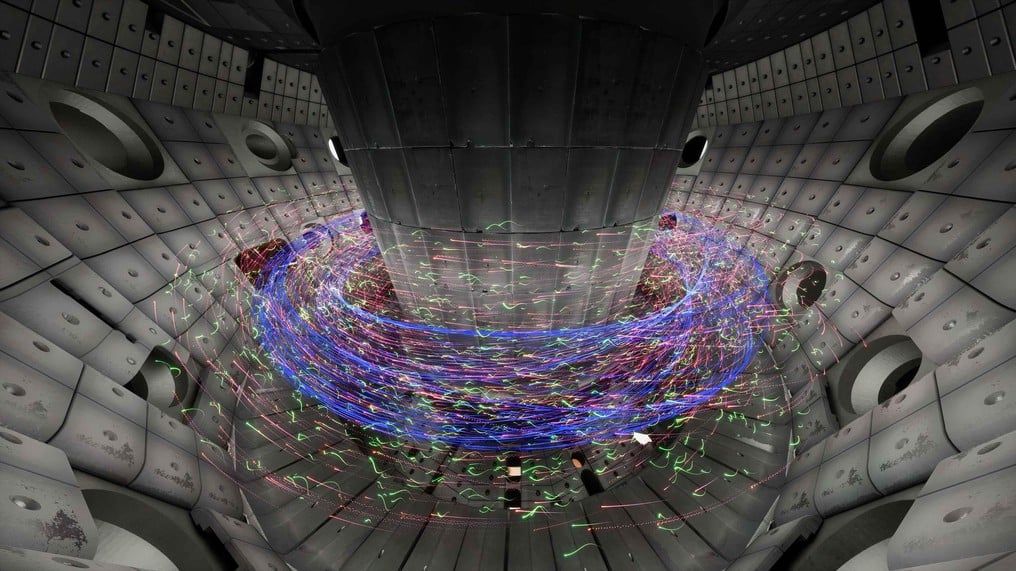A new 3D visualization from Ecole Polytechnique de Lausanne now allows people to see how nuclear fusion happens inside a doughnut-shaped vessel called a tokamak.
What is nuclear fusion and why is it important?
Nuclear fusion is the reaction that powers stars like the Sun. It occurs when two light atomic nuclei fuse together to form one heavier atomic nucleus, releasing a huge amount of energy in the process.
If humans could catalyze a nuclear fusion reaction to produce a net increase in energy, including the energy needed to power associated devices, it could be the start of a reliable, zero-carbon energy source. Read more about engineers exploring fusion energy here. here.
Nuclear fusion can be achieved in a variety of ways: sometimes using lasers, other times using superheated plasma, the latter of which takes place in doughnut-shaped chambers called tokamaks, where physicists can control the plasma using magnetic fields. The world’s largest tokamak It is currently under construction in the south of France.
What are these visualizations and what do they show?
In Visualizing Nuclear Fusion, EPFL’s Institute of Experimental Museology has transformed terabytes of data from tokamak simulations and plasma tests into a 3D visualization showing how particles move inside the toroidal chamber. Inside the Tokamak is an exact replica of EPFL’s Variable Configuration Tokamak (TCV), rendered from scans of the inside of the device.
“To create just one image, the system needs to calculate the trajectories of thousands of moving particles 60 times per second for each eye,” the institute’s computer scientist Samy Mannane said at EPFL. release“During the TCV test operation, we were also able to capture the wear and damage to the graphite tiles in the reactor walls, which are exposed to extremely high temperatures.”
The graphite tiles inside the tokamak must withstand temperatures of more than 180 million degrees Fahrenheit (100 million degrees Celsius), and the visualization faithfully depicts this: electrons are in red, protons in green, and the tokamak’s magnetic field in blue.
“The physics behind the visualization process is extremely complex,” Paolo Ricci, the new director of EPFL’s Swiss Plasma Center, said in the same announcement. “A tokamak has many different moving parts: particles that behave inhomogeneously, magnetic fields, waves that heat the plasma, particles injected from the outside, gases, etc. Even for physicists, it’s hard to sort it all out.”
The future of fusion energy is bright, and with these vivid images of the inner workings of a tokamak, that future literally looks even brighter.


